Apple iPhone 4S: Thoroughly Reviewed
by Anand Lal Shimpi & Brian Klug on October 31, 2011 7:45 PM EST- Posted in
- Smartphones
- Apple
- Mobile
- iPhone
- iPhone 4S
Camera Improvements
Arguably the second largest hardware change (with the A5 SoC being the first and largest) in the 4S is the inclusion of a much improved 8MP camera. In case you’ve forgotten, the iPhone 4 previously included a 5 MP camera. Back when the 4 was introduced, Apple talked for the first time about backside illumination, and pixel sizes. In a later update, the camera got even better with the ability to buffer three full size images and merge to HDR in real time. This time, Apple brought up F/# and backside illumination again, and added one more thing.
Though Apple never talked about any of their optical design for the iPhone 4 camera, to the best of my knowledge the design likely was close to reference designs reported on a few lens lists consisting of four plastic elements. For the 4S, Apple has mixed things up by including its own optical design front and center, and made special note of a five plastic element design. I’ve put together a table showing the 4 and 4S in comparison based on what information is available.
Note that many have speculated that Apple is dual sourcing the CMOS sensor which seems likely, and given the sensors out there the two most likely choices are Omnivision’s OV8830 and Sony’s IMX105. Both of these have almost identical specifications, including 1.4µm pixels, a 1/3.2“ format, and an improved backside illumination process over the previous generation wafer-scale process. Omnivision’s BSI–2 process cites some specifications that seem to line up with what Apple talked about in their presentation, including better quantum efficiency (ability to convert photons into electrons), low-light sensitivity, and larger well capacity (which translates to increased dynamic range). You’ll note that the 4S uses the same sensor format as the previous generation - 1/3.2”, and includes more pixels, which results in the pixel size going down from 1.75µm to 1.4µm.
| iPhone 4 vs. 4S Cameras | ||
| Property | iPhone 4 | iPhone 4S |
| CMOS Sensor | OV5650 | OV8830/IMX105 |
| Sensor Format | 1/3.2" (4.54 x 3.42 mm) | 1/3.2" (4.54 x 3.42 mm) |
| Optical Elements | 4 Plastic | 5 Plastic |
| Pixel Size | 1.75 µm | 1.4 µm |
| Focal Length | 3.85 mm | 4.28 mm |
| Aperture | F/2.8 | F/2.4 |
| Image Capture Size | 2592 x 1936 (5 MP) | 3264 x 2448 (8 MP) |
| Average File Size | ~2.03 MB (AVG) | ~2.77 MB (AVG) |
Everybody likes talking about sensors (and I see lots of attention given to them), but any good photographer knows that it’s a combination of optical system and sensor that matters to performance. Optical design is important, and having studied as an optical engineer I find it interesting that Apple would draw attention to having a custom design of their very own with an additional plastic element. For a while I’ve held off on really talking about smartphone camera optics, but while we’re here, let’s touch briefly on them.
Thus far this generation and the one before it have primarily used 4 plastic elements, and virtually everyone but Nokia uses nothing but plastic (Nokia famously uses Zeiss-branded designs, often with glass elements). Optical design is generally driven by material availability, and there are only a few optical grade (read: transmissive in the visible) thermoplastics out there - Styrene, Polystyrene, ZEONEX, PMMA (Acrylic) and so forth - the list is actually relatively short. Thankfully polystyrene and PMMA can be used to make something of an achromatic pair, with polystyrene as a flint, and PMMA as something of a crown. Plastic provides unique constraints as well though - coatings don’t stick well, not very many have great optical properties, they have a high coefficient of thermal expansion, high index variation with temperature (which oddly decreases with increasing temperature), and less heat resistance or durability among others. With all those downsides you might wonder why smartphone vendors use plastic, and that reason is simple - they’re cheap, but more importantly, they can be molded into complicated shapes. Those complicated shapes are aspheres, which are difficult to fabricate out of glass, and afford much finer control over aberrations using fewer elements, which is an absolute necessity when working with very little package depth.
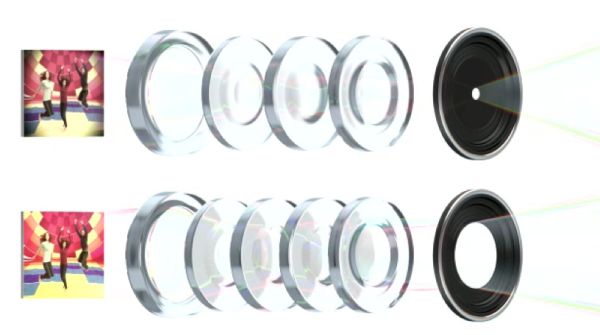 Apple's 4S versus 4 infographic
Apple's 4S versus 4 infographic
So what does adding another element get you? Well, when you’ve faced with limited material choices, adding more surfaces gives you another opportunity to balance aberrations that start blowing up rapidly as you increase F/#. That said, there are tradeoffs as well to adding surfaces - more back reflections, increased cost, and a thicker system. In the keynote, Apple notes that sharpness is improved by 30% in their new 5 element design, and MTF is what they’re undoubtably alluding to.
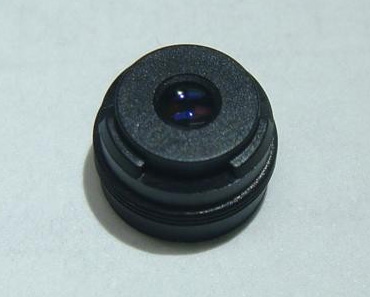
Genius electronic optical - 5P lens. Compare to above.
Genius electronic optical has a page on their website with a lens system that seems likely to be what’s in the 4S, as the specifications include 8 MP resolution (same size), same sensor format, F/# (2.4), 5 plastic elements (5P) and looks basically like what’s in the 4S. Other than that, however, there’s not much more that I can say about this Apple specific design without destructively taking things apart. One thing is for certain however, and it’s that Apple is getting serious about camera performance, something that other handset vendors like HTC (with its F/2.2 systems) are also doing.
Apple made mention that it also included an IR filter in the 4S optical design. If you recall back to our Kinect story, I used the 4 camera to photograph the IR laser structured light projector that Kinect uses to build a 3D picture. The 4 no doubt has an IR filter (though not a great one), but it’s probably just a thin film rather than a discrete filter right before the sensor. The 4S includes what Apple has deemed a ‘hybrid IR filter’ right on top of the sensor, which is possibly just a combination of UV/IR CUT filter (UV is a problem too), and an anti-aliasing filter.
If you try and take the same Kinect (IR source) picture with the 4S, thankfully all those non-visible, IR wavelength photons get rejected by the filter. This doesn’t sound like much until you realize that silicon is transparent in the IR and will bounce around off the metal structures inside a CMOS or CCD and create lovely diffraction effects on fancy sensors. I digress though since that’s probably not what Apple was trying to combat here. On a larger scale, IR will generally just cause undesirably incorrect color representation, and thus people stick an IR filter either in the lens somewhere or before the sensor, which is what has been done in the 4S. The thin film IR filters that smartphones have used in the past also are largely to blame for some of the color nonuniformity and color spot (magenta/green circle) issues that people have started taking note of. With these thin film IR filters, rays incident on the filter at an angle (as we move across the field) change the frequency response of the filter and the result is that infamous circular color nonuniformity. I wager the other effect is some weird combination of vignetting and the microlens array on the CMOS, but when I saw Apple make note of their improved IR filter my thoughts immediately raced to this ‘hybrid IR filter’ as being their logical cure for the infamous green circle the iPhone 4 exhibits.
Another minor difference on the 4S is that the LED flash is improved. The previous LED flash had a distinctively yellow-green hue, the LED flash on the 4S seems slightly brighter and also has a temperature that’s subjectively much closer to daylight, though I didn’t measure it directly. I habitually avoided using LED illumination on the 4 and will probably continue to do so on the 4S (and use HDR instead), but it does bear noting that the LED characteristics are improved. Unfortunately the diffuser and illumination pattern still isn’t very uniform or wide. It also seems that all this talk of moving the LED flash to the other side of the device to combat red eye turned out wrong as well.


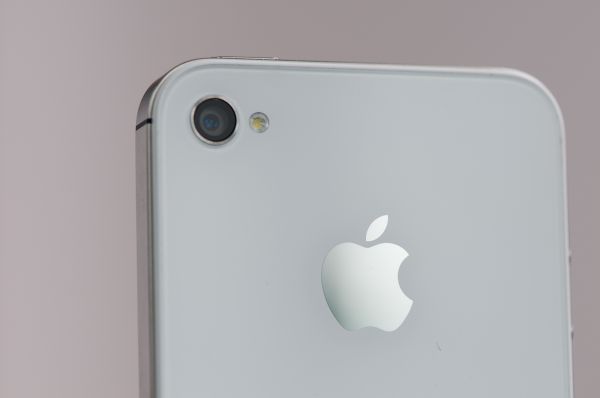
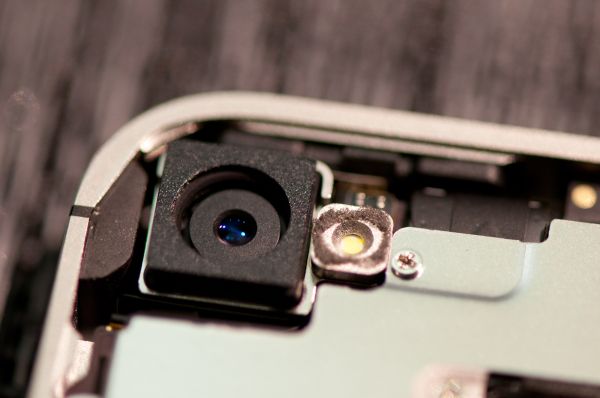
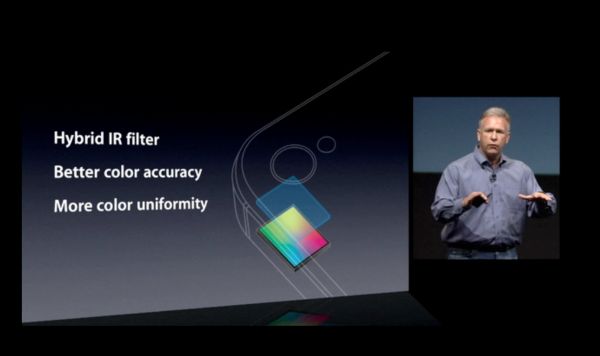








199 Comments
View All Comments
medi01 - Thursday, November 3, 2011 - link
Find contrast of BEAUTIFUL Galaxy phones on the charts pretty please...doobydoo - Friday, December 2, 2011 - link
Yeah the 'beautiful' screens...The Galaxy screen is what, 480 x 800? on a 4.27 inch screen?
The iPhone 4s is 640 x 960 - on a 3.5 inch screen.
A much higher resolution.
Brian Klug - Sunday, November 6, 2011 - link
"1) Ridiculous BS sentences about "improved vibration" that obviously come straight out of Apple's marketing mouth"I'm sorry you feel that way, but the vibration unit is indeed different, and lends a completely different feel from every other device out there which just uses a spinning counterweight.
I'd encourage you to try it on your own.
-Brian
Samus - Tuesday, November 1, 2011 - link
Great review, thanks Anand! If I weren't so stubborn I'd get an iPhone (because they really are great phones) but I just can't do the Apple thing. I like the openness, tweakability and choices provided by Android phones, but for the general population, the iPhone is pretty much the best option for the high-end market.zanon - Monday, October 31, 2011 - link
Hoorah, the definitive review is here at last! Thanks as always for your hard work on this.And yeah, the 543MP2 is a sick monster of a chip. Imagination Technologies really hit a home run with this one, simply amazing performance. Not just Apple either, I believe the Vita is using the MP4 version of this chip. With the show they've put on this time, I'm very much looking forward to seeing what they do for the Series 6 Rogue ones that I think are still due next year. Or for that matter even if they do an update/shrink of these ones.
Great to see so much competition between graphics in the mobile world, practically every major player has a foot in the water at least. I think this stuff will start to matter more and more too for items beyond games. Applications like further advances in augmented reality seem like they could use plenty of power, and are uniquely suited to mobile platforms. Things will get really nuts when retinal projection displays or some equivalent finally start filtering down into the main market.
Lucian Armasu - Tuesday, November 1, 2011 - link
It's not really about the architecture, though, but about the size of the GPU = more performance. It's 2x the size and has 1.5-2x the performance of Exynos' GPU. Not that surprising.I'm not entirely sure why they had to use such a powerful GPU, though. Is it to make it easier to support higher resolutions? Because it can't be about the games. Why would it get 7x the performance of the previous iPhone 4 GPU, when it can only use 2x of that anyway?
loganin - Tuesday, November 1, 2011 - link
That's a pretty weak and factually wrong claim to discredit Apple's product, not that it's surprising coming from you."Exynos SoC Same Size As Apple A5 In iPad 2"
http://www.itproportal.com/2011/06/07/exynos-soc-s...
zanon - Tuesday, November 1, 2011 - link
loganin already addressed your claptrap regarding size, so we'll just ignore that. A few other bits stand out, however. The first is that, fundamentally, even if you were right so what? You don't win any points for improving in one way vs another, what matters is the result at the end. Regardless of the method PowerVR used the fact that the 543MP2 utterly demolishes the competition, and that it's a beast, would not change.Second, you failed to mention in your "1.5x-2x" the performance bit the fact that it's also clocked *50% slower* then the Exynos. Again, even pretending you were correct, your size difference *still* wouldn't explain the kind of gap we're seeing. Unlike size, which is not perfectly correlated with performance, clock rate pretty directly is. If the 4S's A5 was running at 1.2 GHz, it would be more like 2.8x the performance of the Exynos at the high end.
>>Because it can't be about the games. Why would it get 7x the performance of the previous iPhone 4 GPU, when it can only use 2x of that anyway?
Also, this bit is just WTF. You might have noticed that PC GPUs continue to increase in power? Despite resolutions not continuing to increase? WTF do you mean "you can only use 2x of that"?? At least until the level of complete photorealism with full real time physics modeling of everything is achieved there's always room to spend more power just making the scene look better. Duh.
metafor - Tuesday, November 1, 2011 - link
Erm, GPU clocks are independent of what the CPU is clocked at. I.e. just because the A5's CPU is clocked at 800MHz doesn't mean the GPU is.Apple never really releases what the internal clocks of their various components are running at.
Lucian Armasu - Wednesday, November 2, 2011 - link
Do you even know what 50% slower means? It means half the clock speed. It's not 50% slower. It's 30% slower than Exynos CPU.. It's the Exynos CPU that is "50% faster" than the A5 one.But that's not even what we were talking about. I was talking about the GPU, not the CPU. The GPU has a difference frequency.